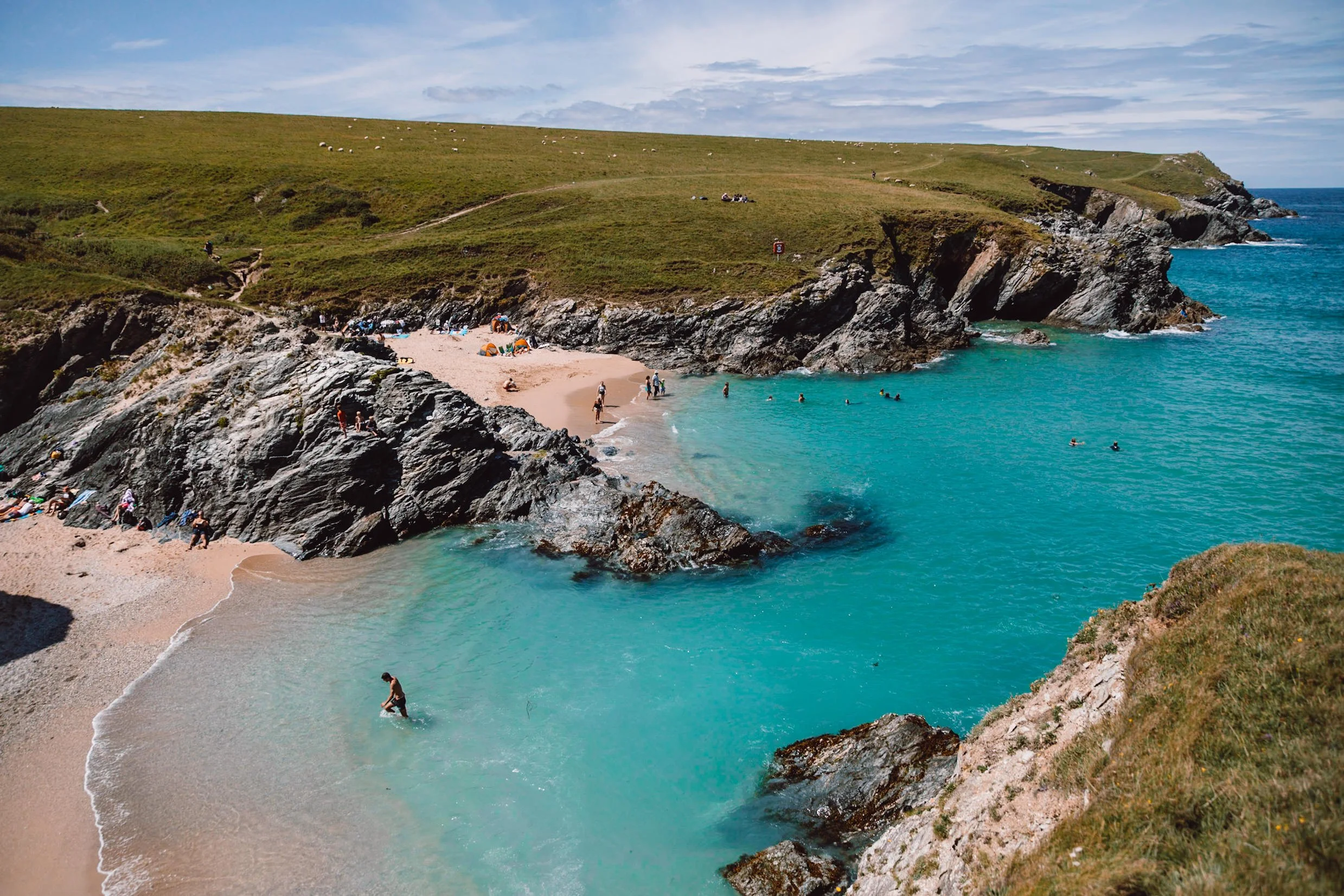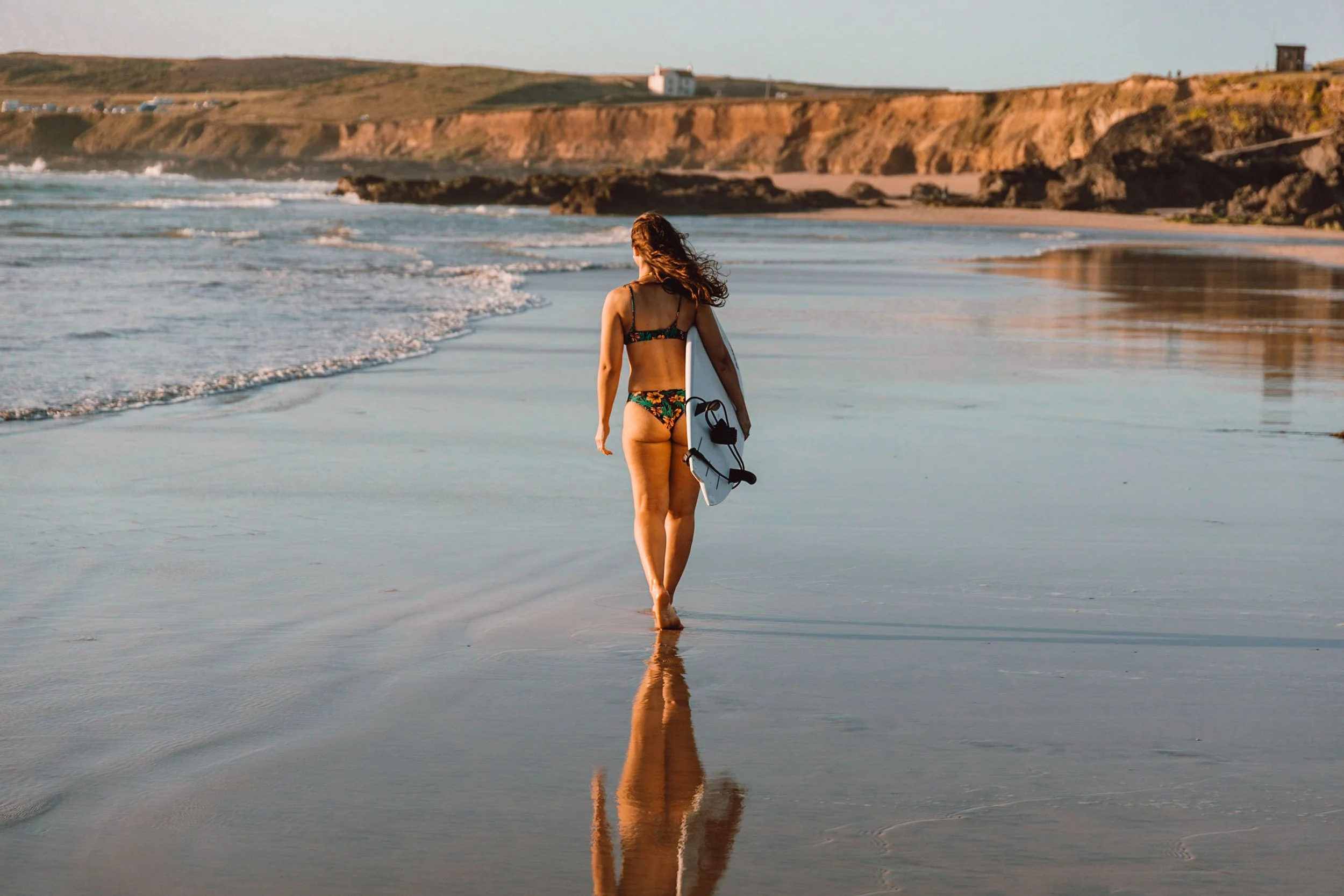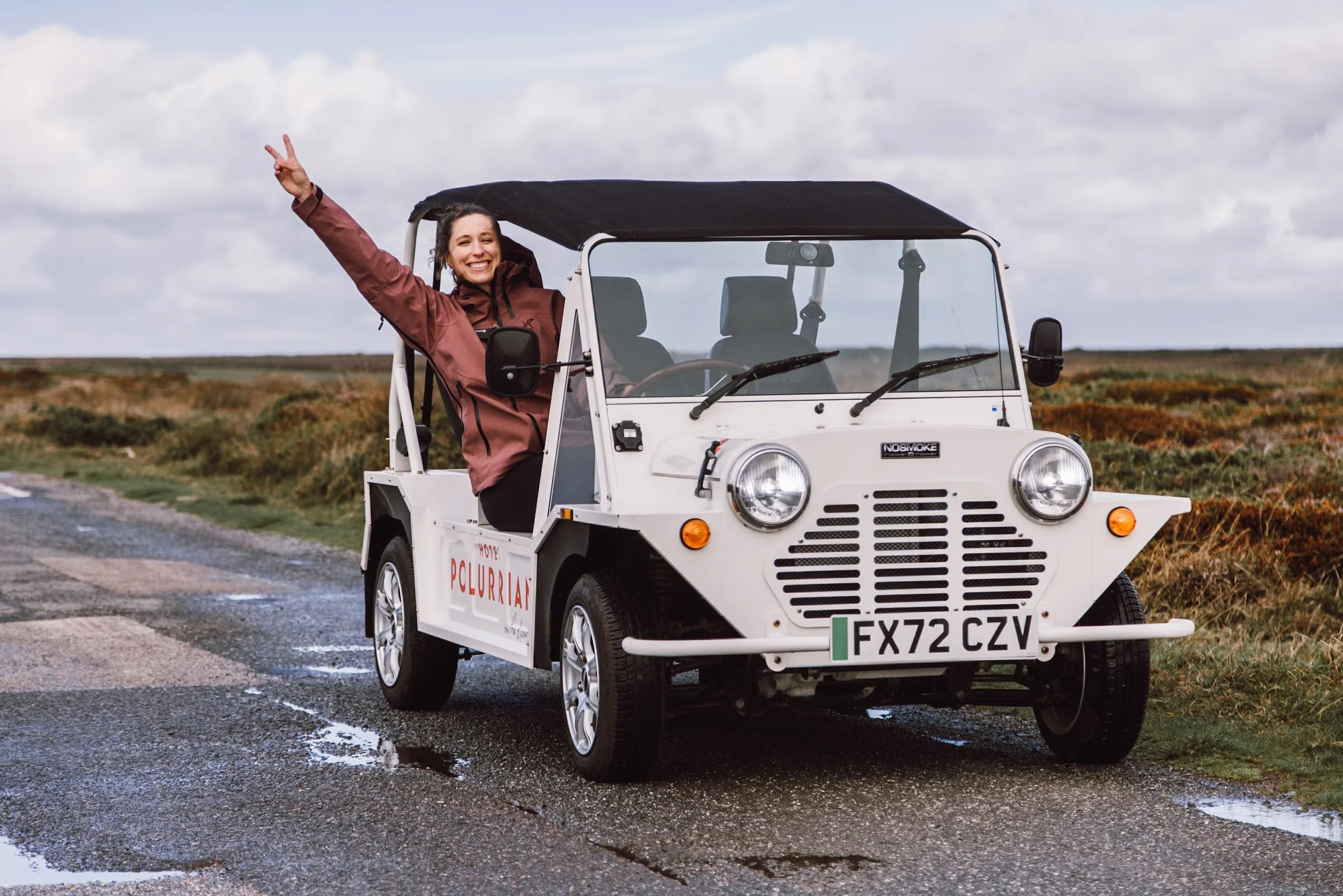Cornwall is one of those rare destinations that’s beautiful year-round. From golden summer beach days to wild winter coastal walks, every season shows a different side of England’s southwestern corner. Choosing the best time to visit Cornwall depends on what you want from your trip, whether that’s sunny days on the sand, peaceful cliff paths, or cosy evenings by the fire in a seaside inn.
Cornwall is where we live, and we write all of our Cornwall guides from a local’s perspective. We experience every season here and bring you the most honest and up-to-date information to help you plan your trip. Having travelled the world, we can honestly say that Cornwall is a truly special place, filled with world-class beaches, incredible surf, fantastic places to eat, and some of the best hotels in the country.
How to Use This Guide
Use the contents table above to jump straight to the section you’re most interested in. This guide covers everything you need to know about the best time to visit Cornwall, including weather by season, crowd levels, prices, and the best times to enjoy beaches, festivals and coastal walks.
When Is the Best Time to Visit Cornwall?
The best time to visit Cornwall is between May and September, when the weather is warmest, the sea is calmest, and the coastal villages are at their most vibrant.
May and June bring long days, colourful wildflowers and fewer crowds compared to the peak summer months. This period is our personal favourite in Cornwall and the time we always recommend visiting before the school holidays begin. We love heading out on long coastal walks and seeing the incredible wildflowers that burst into life at this time of year.
There are also local festivals such as Tunes in the Dunes, held in late spring or early summer on Perranporth Beach. It’s a popular event among locals, showcasing great music acts at relatively affordable prices.
July and August are ideal for family beach holidays, surfing and summer festivals, though prices and visitor numbers rise sharply. If you visit during this period, book accommodation early. September often offers the best of both worlds, with warm seas, quieter beaches and a relaxed, end-of-summer feel.
One of the season’s highlights is Boardmasters, the UK’s largest surf competition and part of the World Surf League qualifying series. The event takes place at Fistral Beach in Newquay, where professional surfers compete to gain points for the World Championship Tour. The wider Boardmasters Festival also hosts major music performances overlooking the Cornish coastline.
If you prefer solitude and lower prices, March, April and October are great alternatives. Even winter has its own charm, especially for dramatic coastal walks, storm watching and peaceful villages.
With Cornwall’s subtropical climate (the only part of the UK to be classed as sub tropical), the weather never gets too cold. It’s generally the warmest region in the UK, and while winter might not be sunbathing weather, it’s still a perfect destination for coastal walks and outdoor adventures.
Cornwall by Season
Spring (March to May)
Spring marks the start of Cornwall’s outdoor season. The cliffs bloom with wildflowers, and seaside cafés reopen after winter. Average temperatures range from 10 to 15°C, with plenty of warm sunny days.
It’s an excellent time for walking sections of the South West Coast Path, visiting gardens like The Lost Gardens of Heligan, and exploring without the summer rush. Easter can be busy, but otherwise it’s peaceful and affordable.
We often find that by mid to late May, the weather is warm enough to spend time on the beaches. You may need a windbreak at this time of year, as breezy days can feel chilly; however, the sun is now warm enough to start soaking up some vitamin D.
Spring Highlight | Spring in Cornwall brings gardens and countryside to life with vibrant blooms and fragrant wildflowers. Explore The Lost Gardens of Heligan, the Eden Project, and the cliffside Minack Theatre gardens as flowers burst into colour. Mild weather and longer days make it ideal for coastal walks, village exploration and the return of sunbathing on beaches.
Summer (June to August)
Summer is Cornwall at its most iconic, with long beach days, festivals, surf lessons and sunset barbecues. Average temperatures hover around 18 to 22°C, and the sea warms to about 17°C by August.
This is peak tourist season, so expect busier beaches and higher accommodation prices, especially in hotspots like St Ives, Newquay and Padstow. Early booking is essential. Still, the buzz of summer in Cornwall is unmatched, and the energy is infectious.
The south coast of Cornwall is stunning at this time of year, with turquoise, crystal-clear waters, golden sandy beaches, and lush palm trees and tropical plants, making it a truly special place to enjoy warm summer days.
Summer Highlight | Boardmasters in Cornwall combines thrilling surf competitions with a vibrant music festival, drawing crowds to Fistral Beach and surrounding towns. As the South West’s biggest festival after Glastonbury, it attracts tens of thousands of visitors. Enjoy world-class surfing, live music stages, food stalls, and beachside activities for the ultimate summer coastal experience.
Autumn (September to November)
Autumn is a secret favourite among locals. September often feels like an encore of summer, with warm seas but far fewer crowds. By October, Cornwall takes on a slower rhythm, and coastal towns become wonderfully relaxed.
Average highs sit around 15 to 18°C in September, dropping to 11°C by November. It’s a great time for scenic drives, food festivals and photography.
An underrated time of year in Cornwall is after the summer holidays, once the schools are back. This often brings a sense of peace for locals, as the busy summer crowds have gone. The weather generally remains pleasant, allowing us to enjoy and explore our home without the many tourists.
Autumn Highlight | The Falmouth Oyster Festival is a celebration of Cornwall’s seafood heritage, featuring fresh oysters, local produce, live music, and family-friendly events. Held along the scenic waterfront, it’s the perfect opportunity to enjoy autumnal seaside vibes, sample delicious local flavors, and immerse yourself in Cornish culture and community festivities.
Winter (December to February)
Winter in Cornwall is quiet, dramatic and surprisingly cosy. Many hotels and pubs offer winter deals, and you can have entire beaches to yourself. The weather can be unpredictable, with temperatures averaging 6 to 10°C, but the light and coastal views are breathtaking.
Popular activities include storm watching from cliff-top cafés, exploring quaint harbour towns, and visiting festive markets in Truro or Padstow.
During the festive season, Cornwall comes alive with light displays at The Eden Project and the Lost Gardens of Heligan, along with numerous winter festivals and Christmas markets. While it is the coldest season of the year, Cornwall is still warmer than much of the UK, with daytime temperatures often above 10°C.
Winter Highlight | The Montol Festival in Penzance celebrates the winter solstice with vibrant parades, traditional music, and fire-lit processions. Streets come alive with costumes, dancing, and seasonal markets, creating a magical, festive atmosphere. It’s a perfect time to experience Cornish culture, local crafts, and community spirit in the heart of winter.
Weather in Cornwall
Cornwall’s maritime climate means it’s generally milder than the rest of the UK. Summers rarely get too hot, and winters stay relatively mild. Rainfall is spread throughout the year, though showers often pass quickly. The south coast (Falmouth, Penzance, Lizard) tends to be slightly warmer and calmer than the rugged north coast (Newquay, Padstow, Bude).
Did you know that the majority of daffodils are grown in Cornwall, making it the world’s largest producer of daffodils? It is common to see daffodils flowering around Christmas time in Cornwall, while the rest of the UK will only see them in sping. The county also has two lambing seasons, while the rest of the UK only has one, thanks to its warmer temperatures.
The Great Gardens of Cornwall are famous for their spectacular magnolia blooms, which traditionally mark the official start of spring in the region. Spring arrives in Cornwall about a month earlier than in the rest of the UK, making it a wonderful time to explore the gardens and enjoy the early-season beauty.
Average annual temperatures:
Summer: 18–22°C
Spring/Autumn: 11–16°C
Winter: 6–10°C
Cornwall’s unpredictable weather is part of its charm. One day you might enjoy sunshine and sea swims, and the next, dramatic mist or drizzle rolling across the cliffs. Often, if it’s raining on the north coast, the south coast can be dry and sunny, and vice versa.
When to Visit for Specific Experiences
For Beaches & Surfing
June to September is best for swimming, paddleboarding and surf lessons. The water is warmest, and lifeguards are on duty at most major beaches. If you prefer smaller waves and quieter sands, late May or September is ideal.
For Coastal Walks
April to June and September to October are perfect. The weather is mild, the coastal paths are lined with wildflowers, and the light is spectacular for photography.
For Festivals & Local Culture
Cornwall’s festival season runs from May to September, with highlights like:
Boardmasters Festival (Newquay, August)
St Ives September Festival
Rock Oyster Festival (July)
Falmouth Sea Shanty Festival (June)
For Budget-Friendly Travel
November to March offer the lowest prices for accommodation and attractions. While some seaside businesses close, many boutique hotels and cosy inns stay open year-round with winter specials.
Use our interactive map below to find that perfect place to stay
Tips for Choosing the Right Time
Cornwall’s charm lies in its variety. Whether you visit in spring for coastal walks, in summer for beach days, or in winter for wild seas and quiet villages, you’ll find something to love.
If you’re visiting for the first time, aim for May, June or September, as these months offer warm weather, fewer crowds and a more relaxed feel that captures Cornwall at its best.
Whenever you go, Cornwall always rewards those who take the time to explore its beaches, villages and coast paths at their own pace.
Book Early for Summer | Many coastal hotels sell out months ahead, especially in July and August.
Pack for All Weather | Even in summer, Cornwall’s coastal climate can change quickly, so layers and waterproofs are essential.
Travel Midweek | Roads and beaches are quieter between Tuesday and Thursday, especially outside school holidays.
Consider Shoulder Seasons | April, May, September and October balance great weather with manageable crowds.
Look for Local Events | Plan your trip around a festival, market or garden opening for a more authentic experience.
Plan your next adventure
If you book through our links, you help support our website at no extra cost to you - thank you!
WATCH OUR EXPERIENCE ON YOUTUBE
Click the button on the top right of the video to view our entire Cornwall playlist
READ our Cornwall Guides
Top 15 Things to Do in Cornwall | Local Guide & Where to Stay
Ultimate St Ives Guide for 2025 | Beaches, Food & Local Tips
Top 12 Spa Hotels in Cornwall 2025 | Coastal Luxury from St Ives to Newquay
13 Things to Do in Cornwall For Adults When It Rains
Ultimate Newquay Food guide | Best Restaurants and Cafés
Best Food spots and Restaurants in Perranporth, Cornwall
11 of the Best Luxury and Boutique Hotels in Cornwall
9 Best Things to Do in Perranporth in Cornwall
Best Tidal Pools in Cornwall | 6 Outdoor swimming spots
35 Best Beaches in Cornwall | Ultimate Beach Guide with Photos
13 of the Best Shops to Visit in Newquay Cornwall
Is The Minack Theatre in Cornwall worth a visit?
Cornwall in April | Weather, Things to Do & Travel Tips








